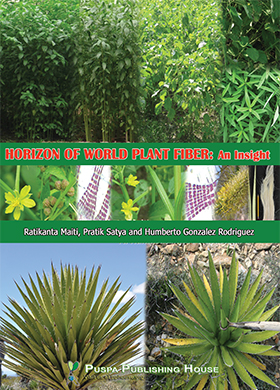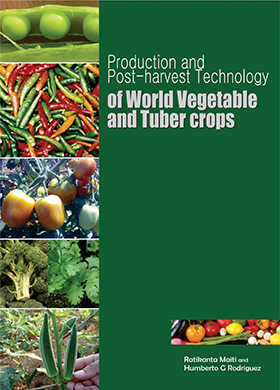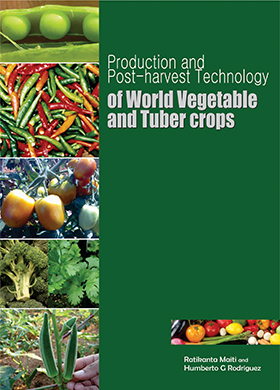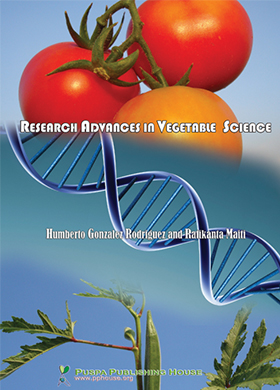Table 1: Details of 15 genotypes used in the study along with parentage
Table 2: Details of six locations in Telangana state used for evaluation of genotypes
Table 3: Mean grain yield (kg ha-1) of 15 rice genotypes across six locations
Table 4: Analysis of variance for grain yield over 15 rice genotypes and 6 locations
Table 5: Partitioning of genotype×environment interaction with AMMI model for grain yield in rice
Figure 1: AMMI-1 model for grain yield showing the means of genotypes (G) and environments (E) against their respective IPCA1 scores in rice
Table 6: Partitioning of genotype×environment interaction with GGE model for grain yield in rice
Figure 2: GGE biplot genotype view for grain yield in rice
Figure 3: GGE biplot environment view for grain yield in rice
Table 7: Mean grain yield and principal component scores of AMMI and GGE for rice genotypes
Figure 4: GGE biplot genotype view for grain yield in rice
Figure 5: What-won-where biplot for 15 genotypes and six locations in rice
Table 1: Details of 15 genotypes used in the study along with parentage
Table 2: Details of six locations in Telangana state used for evaluation of genotypes
Table 3: Mean grain yield (kg ha-1) of 15 rice genotypes across six locations
Table 4: Analysis of variance for grain yield over 15 rice genotypes and 6 locations
Table 5: Partitioning of genotype×environment interaction with AMMI model for grain yield in rice
Figure 1: AMMI-1 model for grain yield showing the means of genotypes (G) and environments (E) against their respective IPCA1 scores in rice
Table 6: Partitioning of genotype×environment interaction with GGE model for grain yield in rice
Figure 2: GGE biplot genotype view for grain yield in rice
Figure 3: GGE biplot environment view for grain yield in rice
Table 7: Mean grain yield and principal component scores of AMMI and GGE for rice genotypes
Figure 4: GGE biplot genotype view for grain yield in rice
Figure 5: What-won-where biplot for 15 genotypes and six locations in rice
Table 1: Details of 15 genotypes used in the study along with parentage
Table 2: Details of six locations in Telangana state used for evaluation of genotypes
Table 3: Mean grain yield (kg ha-1) of 15 rice genotypes across six locations
Table 4: Analysis of variance for grain yield over 15 rice genotypes and 6 locations
Table 5: Partitioning of genotype×environment interaction with AMMI model for grain yield in rice
Figure 1: AMMI-1 model for grain yield showing the means of genotypes (G) and environments (E) against their respective IPCA1 scores in rice
Table 6: Partitioning of genotype×environment interaction with GGE model for grain yield in rice
Figure 2: GGE biplot genotype view for grain yield in rice
Figure 3: GGE biplot environment view for grain yield in rice
Table 7: Mean grain yield and principal component scores of AMMI and GGE for rice genotypes
Figure 4: GGE biplot genotype view for grain yield in rice
Figure 5: What-won-where biplot for 15 genotypes and six locations in rice
Table 1: Details of 15 genotypes used in the study along with parentage
Table 2: Details of six locations in Telangana state used for evaluation of genotypes
Table 3: Mean grain yield (kg ha-1) of 15 rice genotypes across six locations
Table 4: Analysis of variance for grain yield over 15 rice genotypes and 6 locations
Table 5: Partitioning of genotype×environment interaction with AMMI model for grain yield in rice
Figure 1: AMMI-1 model for grain yield showing the means of genotypes (G) and environments (E) against their respective IPCA1 scores in rice
Table 6: Partitioning of genotype×environment interaction with GGE model for grain yield in rice
Figure 2: GGE biplot genotype view for grain yield in rice
Figure 3: GGE biplot environment view for grain yield in rice
Table 7: Mean grain yield and principal component scores of AMMI and GGE for rice genotypes
Figure 4: GGE biplot genotype view for grain yield in rice
Figure 5: What-won-where biplot for 15 genotypes and six locations in rice
Table 1: Details of 15 genotypes used in the study along with parentage
Table 2: Details of six locations in Telangana state used for evaluation of genotypes
Table 3: Mean grain yield (kg ha-1) of 15 rice genotypes across six locations
Table 4: Analysis of variance for grain yield over 15 rice genotypes and 6 locations
Table 5: Partitioning of genotype×environment interaction with AMMI model for grain yield in rice
Figure 1: AMMI-1 model for grain yield showing the means of genotypes (G) and environments (E) against their respective IPCA1 scores in rice
Table 6: Partitioning of genotype×environment interaction with GGE model for grain yield in rice
Figure 2: GGE biplot genotype view for grain yield in rice
Figure 3: GGE biplot environment view for grain yield in rice
Table 7: Mean grain yield and principal component scores of AMMI and GGE for rice genotypes
Figure 4: GGE biplot genotype view for grain yield in rice
Figure 5: What-won-where biplot for 15 genotypes and six locations in rice
Table 1: Details of 15 genotypes used in the study along with parentage
Table 2: Details of six locations in Telangana state used for evaluation of genotypes
Table 3: Mean grain yield (kg ha-1) of 15 rice genotypes across six locations
Table 4: Analysis of variance for grain yield over 15 rice genotypes and 6 locations
Table 5: Partitioning of genotype×environment interaction with AMMI model for grain yield in rice
Figure 1: AMMI-1 model for grain yield showing the means of genotypes (G) and environments (E) against their respective IPCA1 scores in rice
Table 6: Partitioning of genotype×environment interaction with GGE model for grain yield in rice
Figure 2: GGE biplot genotype view for grain yield in rice
Figure 3: GGE biplot environment view for grain yield in rice
Table 7: Mean grain yield and principal component scores of AMMI and GGE for rice genotypes
Figure 4: GGE biplot genotype view for grain yield in rice
Figure 5: What-won-where biplot for 15 genotypes and six locations in rice
Table 1: Details of 15 genotypes used in the study along with parentage
Table 2: Details of six locations in Telangana state used for evaluation of genotypes
Table 3: Mean grain yield (kg ha-1) of 15 rice genotypes across six locations
Table 4: Analysis of variance for grain yield over 15 rice genotypes and 6 locations
Table 5: Partitioning of genotype×environment interaction with AMMI model for grain yield in rice
Figure 1: AMMI-1 model for grain yield showing the means of genotypes (G) and environments (E) against their respective IPCA1 scores in rice
Table 6: Partitioning of genotype×environment interaction with GGE model for grain yield in rice
Figure 2: GGE biplot genotype view for grain yield in rice
Figure 3: GGE biplot environment view for grain yield in rice
Table 7: Mean grain yield and principal component scores of AMMI and GGE for rice genotypes
Figure 4: GGE biplot genotype view for grain yield in rice
Figure 5: What-won-where biplot for 15 genotypes and six locations in rice
Table 1: Details of 15 genotypes used in the study along with parentage
Table 2: Details of six locations in Telangana state used for evaluation of genotypes
Table 3: Mean grain yield (kg ha-1) of 15 rice genotypes across six locations
Table 4: Analysis of variance for grain yield over 15 rice genotypes and 6 locations
Table 5: Partitioning of genotype×environment interaction with AMMI model for grain yield in rice
Figure 1: AMMI-1 model for grain yield showing the means of genotypes (G) and environments (E) against their respective IPCA1 scores in rice
Table 6: Partitioning of genotype×environment interaction with GGE model for grain yield in rice
Figure 2: GGE biplot genotype view for grain yield in rice
Figure 3: GGE biplot environment view for grain yield in rice
Table 7: Mean grain yield and principal component scores of AMMI and GGE for rice genotypes
Figure 4: GGE biplot genotype view for grain yield in rice
Figure 5: What-won-where biplot for 15 genotypes and six locations in rice
Table 1: Details of 15 genotypes used in the study along with parentage
Table 2: Details of six locations in Telangana state used for evaluation of genotypes
Table 3: Mean grain yield (kg ha-1) of 15 rice genotypes across six locations
Table 4: Analysis of variance for grain yield over 15 rice genotypes and 6 locations
Table 5: Partitioning of genotype×environment interaction with AMMI model for grain yield in rice
Figure 1: AMMI-1 model for grain yield showing the means of genotypes (G) and environments (E) against their respective IPCA1 scores in rice
Table 6: Partitioning of genotype×environment interaction with GGE model for grain yield in rice
Figure 2: GGE biplot genotype view for grain yield in rice
Figure 3: GGE biplot environment view for grain yield in rice
Table 7: Mean grain yield and principal component scores of AMMI and GGE for rice genotypes
Figure 4: GGE biplot genotype view for grain yield in rice
Figure 5: What-won-where biplot for 15 genotypes and six locations in rice
Table 1: Details of 15 genotypes used in the study along with parentage
Table 2: Details of six locations in Telangana state used for evaluation of genotypes
Table 3: Mean grain yield (kg ha-1) of 15 rice genotypes across six locations
Table 4: Analysis of variance for grain yield over 15 rice genotypes and 6 locations
Table 5: Partitioning of genotype×environment interaction with AMMI model for grain yield in rice
Figure 1: AMMI-1 model for grain yield showing the means of genotypes (G) and environments (E) against their respective IPCA1 scores in rice
Table 6: Partitioning of genotype×environment interaction with GGE model for grain yield in rice
Figure 2: GGE biplot genotype view for grain yield in rice
Figure 3: GGE biplot environment view for grain yield in rice
Table 7: Mean grain yield and principal component scores of AMMI and GGE for rice genotypes
Figure 4: GGE biplot genotype view for grain yield in rice
Figure 5: What-won-where biplot for 15 genotypes and six locations in rice
Table 1: Details of 15 genotypes used in the study along with parentage
Table 2: Details of six locations in Telangana state used for evaluation of genotypes
Table 3: Mean grain yield (kg ha-1) of 15 rice genotypes across six locations
Table 4: Analysis of variance for grain yield over 15 rice genotypes and 6 locations
Table 5: Partitioning of genotype×environment interaction with AMMI model for grain yield in rice
Figure 1: AMMI-1 model for grain yield showing the means of genotypes (G) and environments (E) against their respective IPCA1 scores in rice
Table 6: Partitioning of genotype×environment interaction with GGE model for grain yield in rice
Figure 2: GGE biplot genotype view for grain yield in rice
Figure 3: GGE biplot environment view for grain yield in rice
Table 7: Mean grain yield and principal component scores of AMMI and GGE for rice genotypes
Figure 4: GGE biplot genotype view for grain yield in rice
Figure 5: What-won-where biplot for 15 genotypes and six locations in rice
Table 1: Details of 15 genotypes used in the study along with parentage
Table 2: Details of six locations in Telangana state used for evaluation of genotypes
Table 3: Mean grain yield (kg ha-1) of 15 rice genotypes across six locations
Table 4: Analysis of variance for grain yield over 15 rice genotypes and 6 locations
Table 5: Partitioning of genotype×environment interaction with AMMI model for grain yield in rice
Figure 1: AMMI-1 model for grain yield showing the means of genotypes (G) and environments (E) against their respective IPCA1 scores in rice
Table 6: Partitioning of genotype×environment interaction with GGE model for grain yield in rice
Figure 2: GGE biplot genotype view for grain yield in rice
Figure 3: GGE biplot environment view for grain yield in rice
Table 7: Mean grain yield and principal component scores of AMMI and GGE for rice genotypes
Figure 4: GGE biplot genotype view for grain yield in rice
Figure 5: What-won-where biplot for 15 genotypes and six locations in rice
People also read
Research Article
Effect of Different Levels of Pruning on Quality of Custard Apple (Annona squmosa L.)
S. R. Kadam, R. M. Dheware and P. S. UradeCustard apple (Annona squamosa L.), pruning levels, treatments, quality
Published Online : 01 Oct 2018
Full Research
Integrated Nutrient Management on Growth and Productivity of Rapeseed-mustard Cultivars
P. K. Saha, G. C. Malik, P. Bhattacharyya and M. BanerjeeNutrient management, variety, rapeseed-mustard, seed yield
Published Online : 07 Apr 2015
Research Article
Constraints Perceived by the Farmers in Adoption of Improved Ginger Production Technology- a Study of Low Hills of Himachal Pradesh
Sanjeev Kumar, S. P. Singh and Raj Rani SharmaConstraints, ginger, mean percent score, schedule
Published Online : 27 Dec 2018
Review Article
Morphological, Physiological and Biochemical Response to Low Temperature Stress in Tomato (Solanum lycopersicum L.): A Review
D. K. Yadav, Yogendra K. Meena, L. N. Bairwa, Uadal Singh, S. K. Bairwa1, M. R. Choudhary and A. SinghAntioxidant enzymes, morphological, osmoprotectan, physiological, ROS, tomato
Published Online : 31 Dec 2021
Research Article
Social Structure of Mizo Village: a Participatory Rural Appraisal
Lalhmunmawia and Samares Kumar DasSocial structure, Mizoram, Mizo village, PRA
Published Online : 05 Mar 2018
Research Article
Traditional Knowledge on Uncultivated Green Leafy Vegetables (UCGLVS) Used in Nalgonda District of Telangana
Kanneboina Soujanya, B. Anila Kumari, E. Jyothsna and V. Kavitha KiranNutritious, traditional knowledge, uncultivated green leafy vegetable
Published Online : 30 Jul 2021
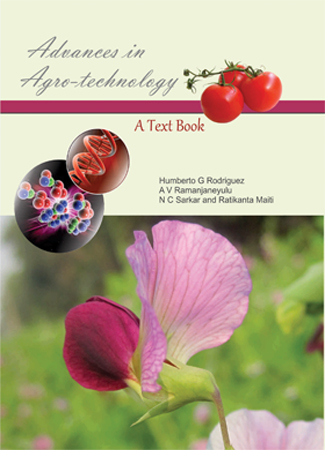
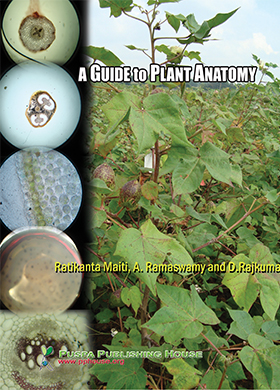
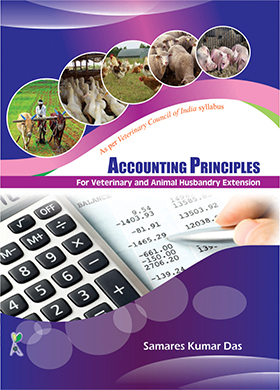
.jpg)
.jpg)


